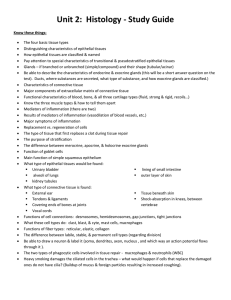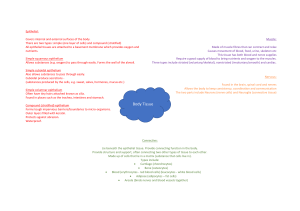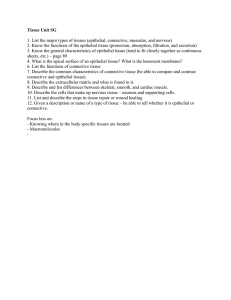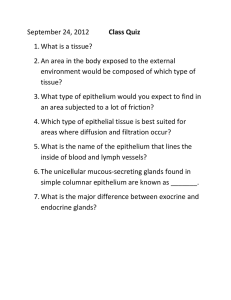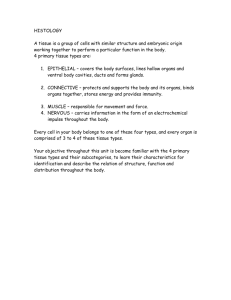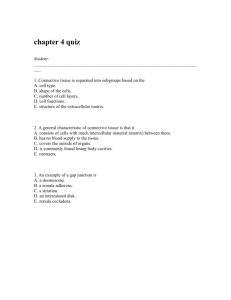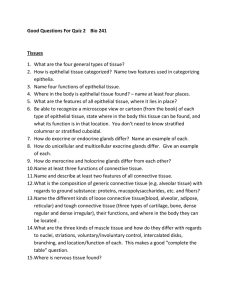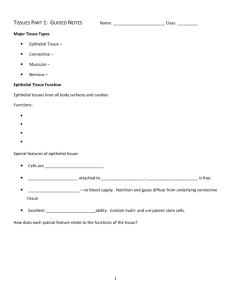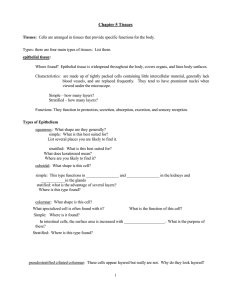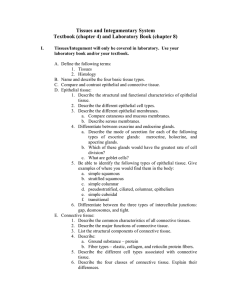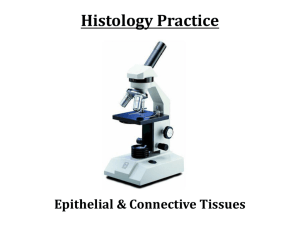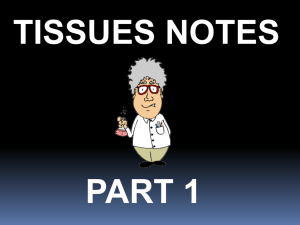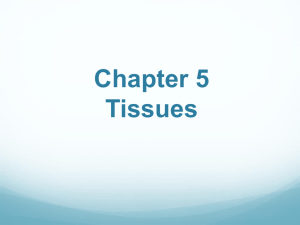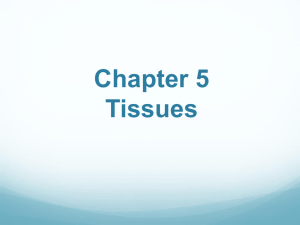Chapter 3b – Tissues
advertisement
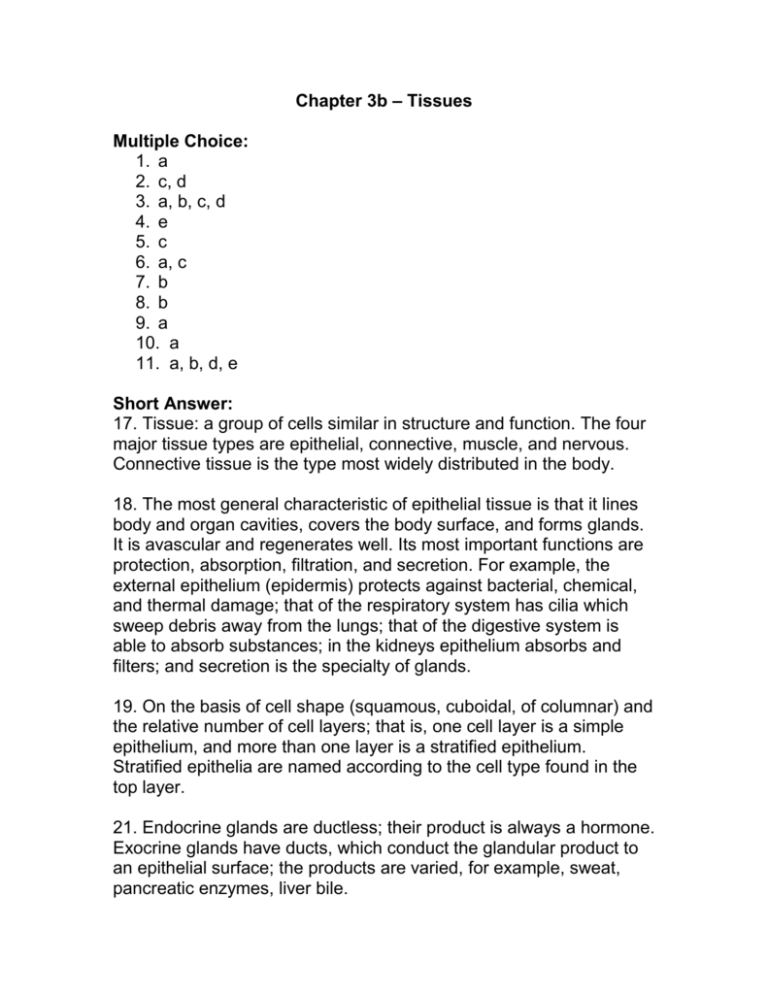
Chapter 3b – Tissues Multiple Choice: 1. a 2. c, d 3. a, b, c, d 4. e 5. c 6. a, c 7. b 8. b 9. a 10. a 11. a, b, d, e Short Answer: 17. Tissue: a group of cells similar in structure and function. The four major tissue types are epithelial, connective, muscle, and nervous. Connective tissue is the type most widely distributed in the body. 18. The most general characteristic of epithelial tissue is that it lines body and organ cavities, covers the body surface, and forms glands. It is avascular and regenerates well. Its most important functions are protection, absorption, filtration, and secretion. For example, the external epithelium (epidermis) protects against bacterial, chemical, and thermal damage; that of the respiratory system has cilia which sweep debris away from the lungs; that of the digestive system is able to absorb substances; in the kidneys epithelium absorbs and filters; and secretion is the specialty of glands. 19. On the basis of cell shape (squamous, cuboidal, of columnar) and the relative number of cell layers; that is, one cell layer is a simple epithelium, and more than one layer is a stratified epithelium. Stratified epithelia are named according to the cell type found in the top layer. 21. Endocrine glands are ductless; their product is always a hormone. Exocrine glands have ducts, which conduct the glandular product to an epithelial surface; the products are varied, for example, sweat, pancreatic enzymes, liver bile. 22. Connective tissues are usually characterized by a large amount of extracellular matrix, which is secreted by the living cells and variations in vascularization. Connective tissues serve to connect, support, protect, and repair other body tissues. The functions of connective tissue are best explained by its matrix; that is, when connective tissue is a cushioning tissue, the matrix is soft and pliable; when the connective tissue is meant to support or give strength to the body, the matrix is hard/strong. 24. To contract or shorten. 27. Neoplasm: Growth or cell mass that results from the loss of the normal controls of cell division. Hyperplasia: An increase in the size of a body organ that results from a local stimulant; usually temporary. Atrophy: A decrease in the size of a body organ or body part as a result of the loss of normal stimulation (exercise or nerve stimulation). At the Clinic: 3. Cartilage heals slowly because it lacks the blood supply necessary for the healing process. 4. Only the liver will fully recover because it is composed of epithelial tissue, which completely regenerates. The injured areas of the heart and the brain grow back as scar tissue and thus do not completely regenerate.


